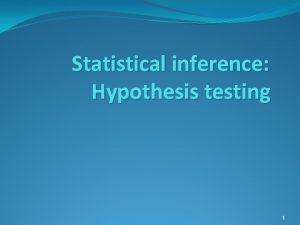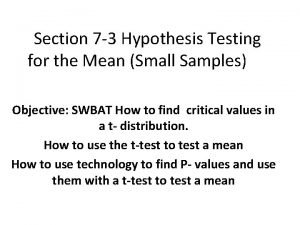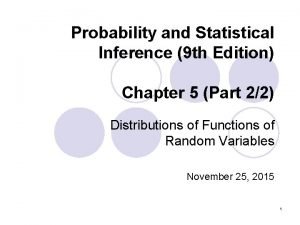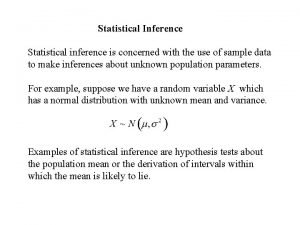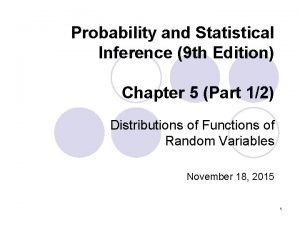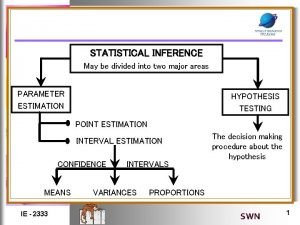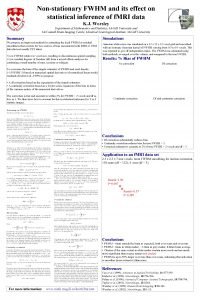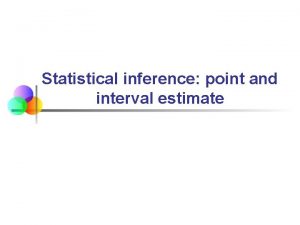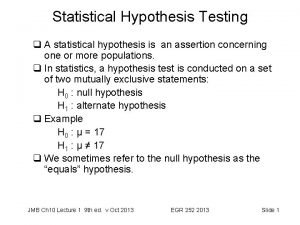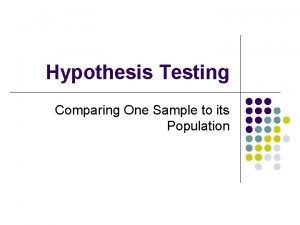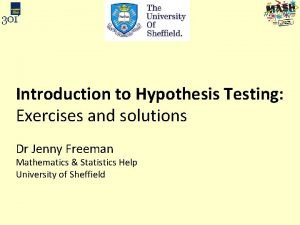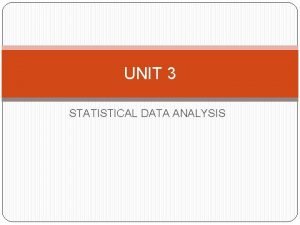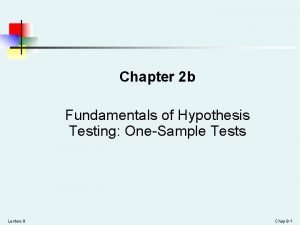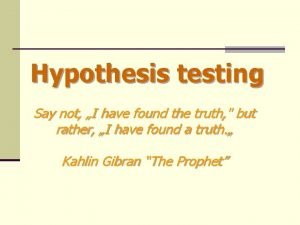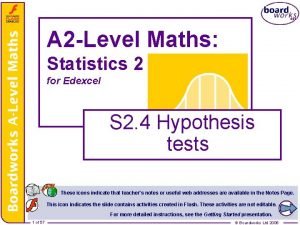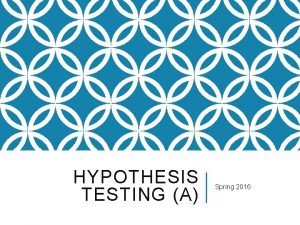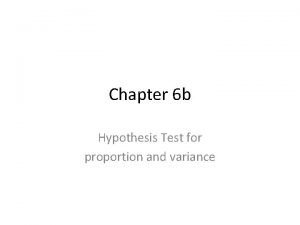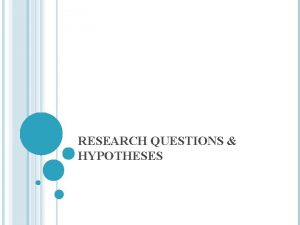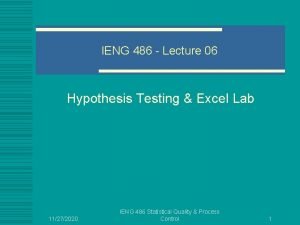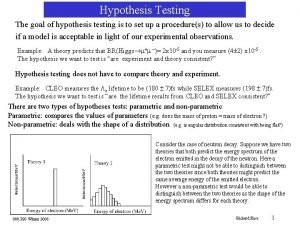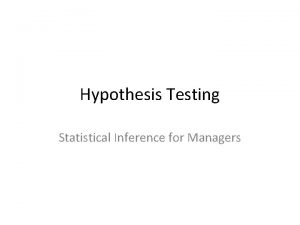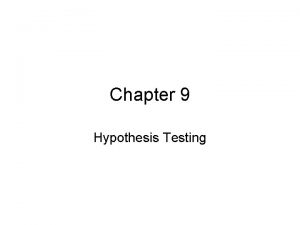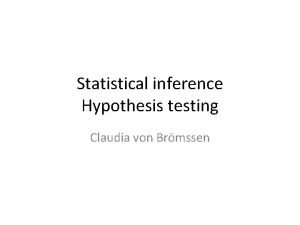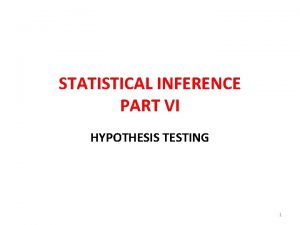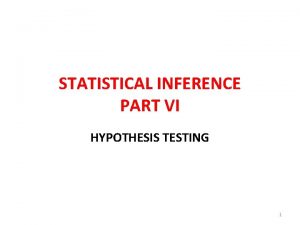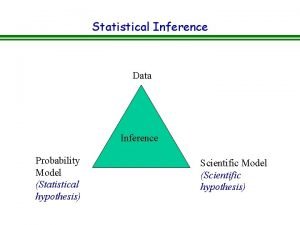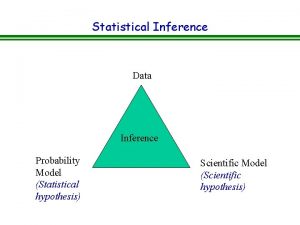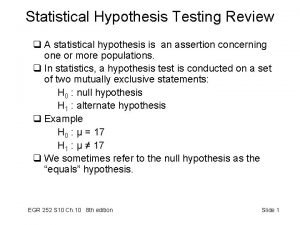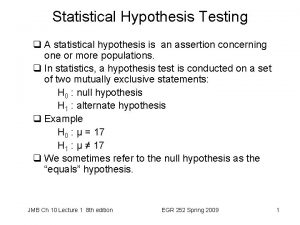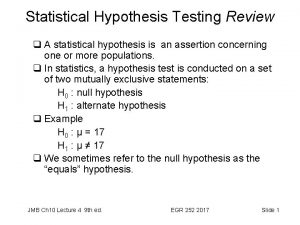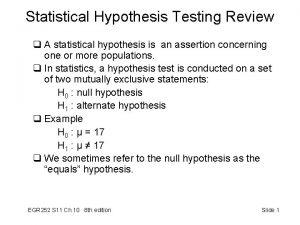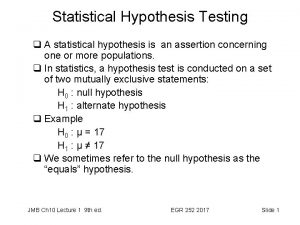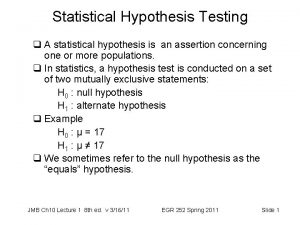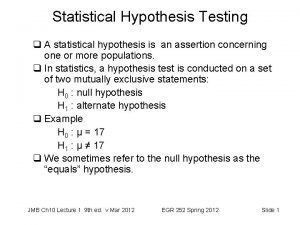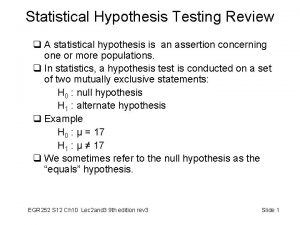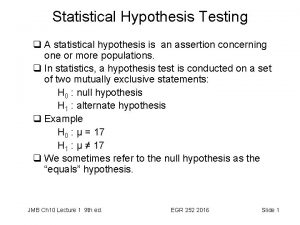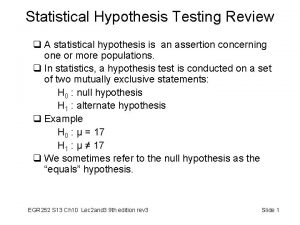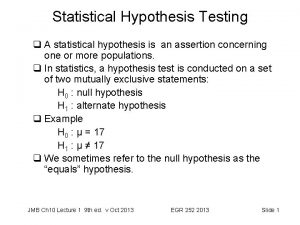Statistical Inference Hypothesis Testing What is a statistical























- Slides: 23

Statistical Inference

Hypothesis Testing • • • What is a statistical hypothesis? What is so important about it? What is a rejection region? What does it mean to say that a finding is statistically significant? Describe Type I and Type II errors.

Hypothesis Testing • Task: Statement about unknown vales of population parameters in terms of sample information • Elements of a hypothesis test: – Null hypothesis (H 0 ) - Statement on the value(s) of unknown parameter(s); – Alternative hypothesis - Statement contradictory to the null hypothesis – Test statistic – Estimate based on sample information and null hypothesis used to test between null and alternative hypotheses – Rejection (Critical) region – Range of value on the test statistic for which we reject the null in favor of the alternative hypothesis

Hypothesis Testing True State Decision Do not reject Null Reject Null H 0 True HA True Type II Error Correct Decision P(Type II)= Type I Error p(Type I)= Correct Decision Power=1 -

Critical Value • Critical value: Value that separates the critical (rejection) region from the values of the test statistic that do not lead to rejection of the null hypothesis, given the sampling distribution and the significance level .

Significance Level • The significance level ( ): Probability of the test statistic falling in the critical region under a valid null hypothesis. • : Conventional Choices for are 0. 05, 0. 01, and 0. 10. • p-value: Probability of observing the test statistic under the null hypothesis

Significance Level and Power • Level of significance: Probability that the test rejects the null hypothesis on the assumption that the null hypothesis is true. • Power of a test: Probability that the test rejects the null hypothesis on the assumption that alternative hypothesis is true.

Test of Hypothesis: Interpretations • Rejecting the null hypothesis • Do not reject H 0 : Does not mean that H 0 is true; nor that the data supports H 0. If the observations are few, the test would not have the power, that is, difficult for a test to reject a false null H 0. • Reject H 0 does not mean that HA is true. It means that either H 0 is false or the event has probability no larger than the significance level.

Statistical Significance vs. Practical Importance • An effect may be of importance but not statistically significant because of sample limitations (poor quality or few observations). • The effect may not be of much policy significance in terms of impact but still statistically significant due to high quality of data.

Hypothesis Testing: Steps State the maintained hypothesis. State the null & alternative hypotheses. Choose the test statistic and estimate its value. Specify the sampling distribution of the test statistics under the null hypothesis. • Determine the critical value(s) corresponding to a significance level. • Determine the p-value for the test statistic. • State the conclusion of a hypothesis test in simple, nontechnical terms. • •

Hypothesis Testing: Rationale • We infer that the assumption is probably incorrect given the maintained and null hypotheses, if the probability of getting the sample is exceptionally small. • Please note that the null hypothesis contains equality. Comparing the assumption and the sample results, we infer one of the following:

Hypothesis Testing: Rationale • Under the null hypothesis, if the probability of observing the sample estimate is high, discrepancy between the assumption and the sample estimate, if any, is due to chance. • If this probability is very low, even relatively large discrepancy between the assumption and the sample is due to invalid null hypothesis.

Test of Hypothesis: Population Means • Assumptions: 1) Simple random sample 2) Population variance is known 3) Population distribution is normal or sample size is more than 30

Test of Hypothesis: Population Means Known population variance • Test statistic z= x – µx n

Two Tail Test

One- and Two Tail Tests One-Tail Test (left tail) Two-Tail Test One-Tail Test (right tail)

Test of Hypothesis: Population Means • Assumptions: 1) Simple random sample 2) Population variance is unknown 3) Population distribution is normal or sample size is more than 30

Test of Hypothesis: Population Means Unknown population variance • Test statistic x –µx t= s n

Student’s t-test: An Illustration • Question: The diameter of some ball for study is specified to be one meter. A random sample of 10 such balls is selected to check the specification. The sample selected gave the following measurements: 1. 01, 1. 02, 1. 00, 0. 99, 1. 02, 1. 00, 1. 02 • Is there any reason to believe that there has been a change in the average diameter?

Student’s t-test • Level of significance = 0. 05 • Maintained hypothesis: Distribution of diameters is normal • n = 10 • H 0 : m = 1. 0 • HA : m <> 1. 0 • Sample mean = 1. 008

Student’s t-test • • Estimate of population variance = 0. 000151 Std. deviation = 0. 012288 t-statistic = 1. 953125 (9 d. f. ) t(9, 0. 05) = 2. 262 Computed t < tabulated t Do not reject H 0 Conclusion: Sample information supports the hypothesis that the average diameter of the ball is one meter.

What would be the sampling distribution of a sample mean from a normally distributed population? Sample mean from a normal population will also be normally distributed for any sample size n

Central Limit Theorem • The sampling distribution of mean of n sample observations from any population would be approximately normal when n is sufficiently large.
 P value significant difference
P value significant difference Statistics hypothesis
Statistics hypothesis Chebyshev's inequality
Chebyshev's inequality Statistical inference is concerned with
Statistical inference is concerned with Probability and statistical inference 9th solution pdf
Probability and statistical inference 9th solution pdf Statistical inference is divided into
Statistical inference is divided into Statistical inference
Statistical inference Statistical inference point estimation
Statistical inference point estimation Hypothesis testing in statistics
Hypothesis testing in statistics Formula of hypothesis testing
Formula of hypothesis testing Nebular hypothesis and protoplanet hypothesis venn diagram
Nebular hypothesis and protoplanet hypothesis venn diagram What is an alternative hypothesis
What is an alternative hypothesis Alternative hypothesis
Alternative hypothesis Null hypothesis examples
Null hypothesis examples Hypothesis testing exercises and solutions
Hypothesis testing exercises and solutions Sources of hypothesis
Sources of hypothesis Hypothesis test example
Hypothesis test example Meme about hypothesis testing
Meme about hypothesis testing Edexcel a level maths hypothesis testing
Edexcel a level maths hypothesis testing What is hypothesis testing
What is hypothesis testing Hypothesis testing for population proportion
Hypothesis testing for population proportion Hypothesis testing
Hypothesis testing Hypothesis test excel
Hypothesis test excel Goal of hypothesis testing
Goal of hypothesis testing
